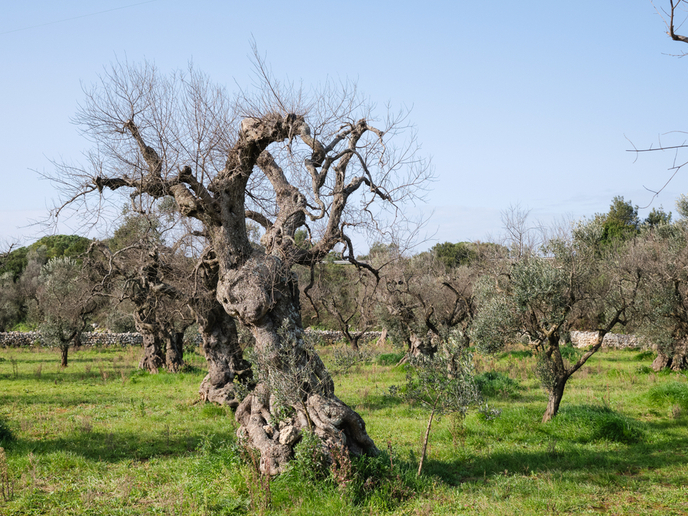Fight to protect Europe’s agriculture from devastating pest
The plant pathogen Xylella fastidiosa (Xf) is believed to have originated in Central America and is now found across the world. The bacterium is transmitted by insects as they feed on the plants’ sap and progressively colonises the xylem tissues. These become blocked, robbing the plants of essential water and causing them to die of thirst from the inside. The pathogen first made its appearance in Europe in 2013 in Puglia, Italy, where the local climate suited the spread of the disease, resulting in the destruction of millions of olive trees, some hundreds of years old. Since its detection in Puglia, different strains of the bacterium have been identified in northern Italy, France, Portugal and Spain. Olives and almond trees are the EU crops under major threat. The XF-ACTORS project established a multidisciplinary research programme to improve prevention, early detection and control of the pathogen. “XF-ACTORS is the first international research project in Europe entirely devoted to developing a multidisciplinary research programme to fight Xylella fastidiosa, one of the most dangerous plant bacteria worldwide. The programme comprises 29 partners from 14 countries, including 4 non-European research centres from the United States, Brazil, Costa Rica and Taiwan,” states project coordinator Maria Saponari. The project complements the work of the POnTE project, which has been working to minimise the risk of introduction/impact of emerging pests threatening EU agriculture and forestry.
Know your enemy
Thanks to the wide-scale use of genomic sequencing, researchers can now shed light on the origin of Xf in Europe, which reveals that the pathogen has a longer history in Europe than previously thought. “We now know that strains display a diversity of host ranges and aggressiveness, and so measures to control the impact of the infections should be tailored to the specific scenarios occurring in the different EU outbreaks in Italy, France, Portugal and Spain,” says Saponari. Advances have also been made in deciphering the mechanisms and the components of the host immune systems responding to Xf infection, opening new routes for future breeding programmes and long-term sustainable management approaches. Project partners also developed the largest data set of genome sequences, offering a unique tool for answering biological and epidemiological questions based on analyses of phylogenetic relationships and population structures. Studies in laboratories and under field conditions revealed which plant species the EU insect vectors prefer to feed on, their feeding behaviours and during which stage in their life cycle they became effective carriers of the bacterium. Greater knowledge about the insect vectors means more targeted interventions to reduce their population and their capability of transmitting Xf. Researchers also created risk maps to predict the pathogen spread, enabling the most vulnerable sites to be identified and surveillance prioritised. “The biological data have been used to fine-tune the parameters of the epidemiological models, to ensure they represent as close as possible the real disease scenarios,” Saponari comments.
Knowledge is power
Finding a definitive solution for therapy against Xf is a long-term and ambitious objective. Thanks to XF-ACTORS, we now know several aspects of the outbreak in Europe. Knowledge generated by XF-ACTORS research will help growers to manage the pest and prevent further economic losses in crops. “This includes tools to mitigate the impact of the disease, such as reducing the vector populations or improving the plants’ resilience to infection. It will also enhance the capacity and competence of plant health authorities to strengthen the EU plant health regime and improve prevention measures like legislation, technical procedures, means of disease control and so on,” points out Saponari.
Keywords
XF-ACTORS, pathogen, plants, olive, bacterium, insect, vector, plant health, Xylella fastidiosa, CoDiRO, genome sequence







